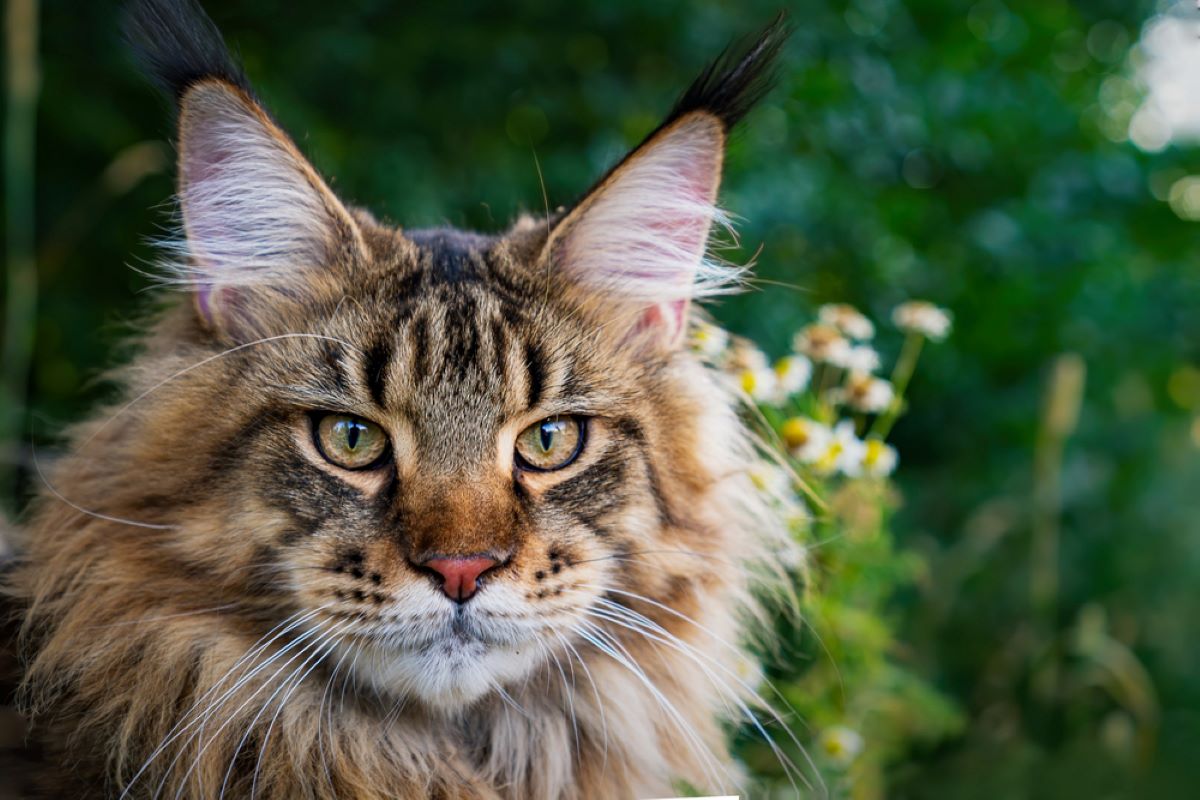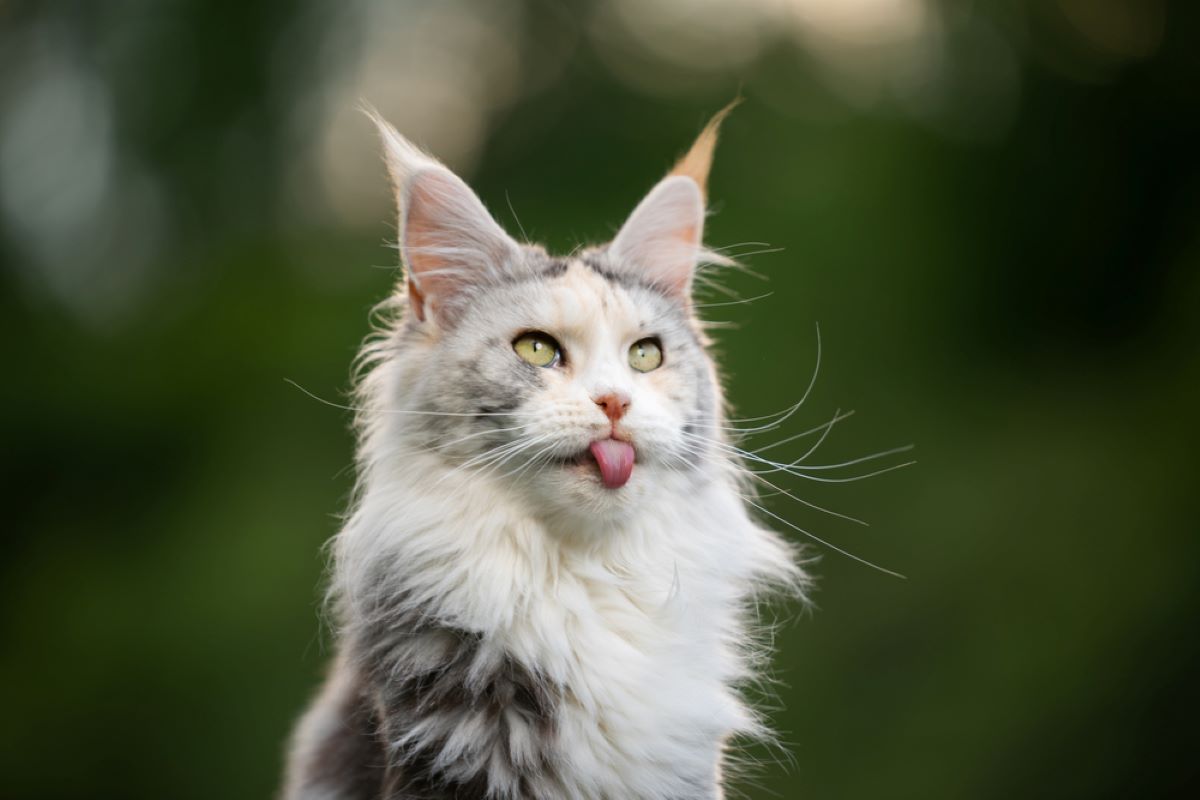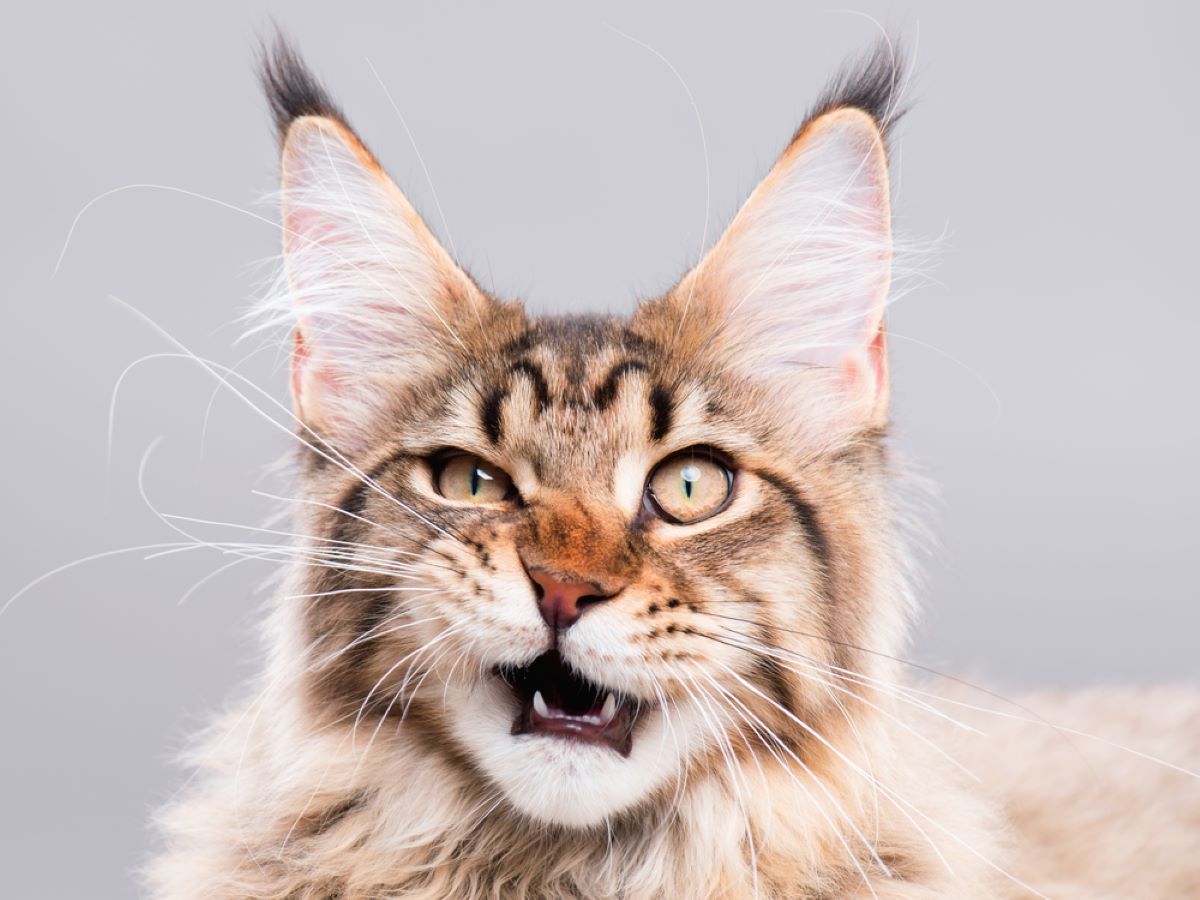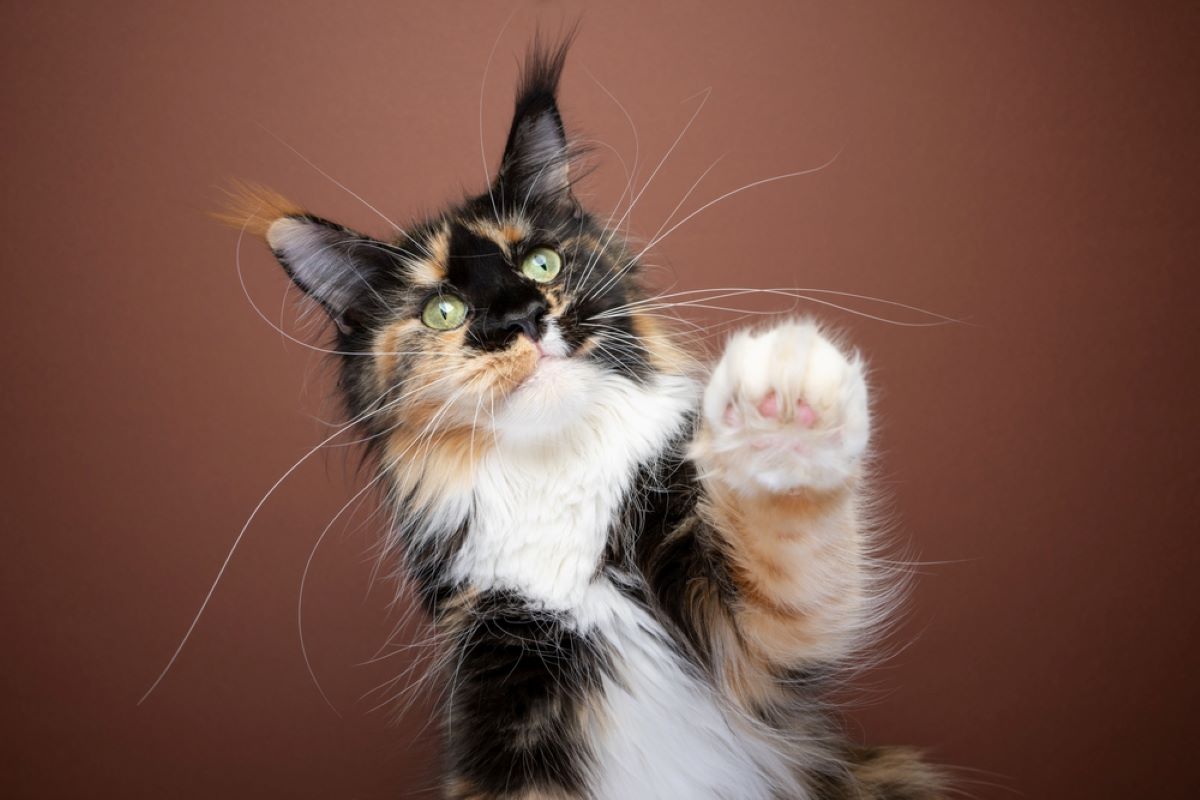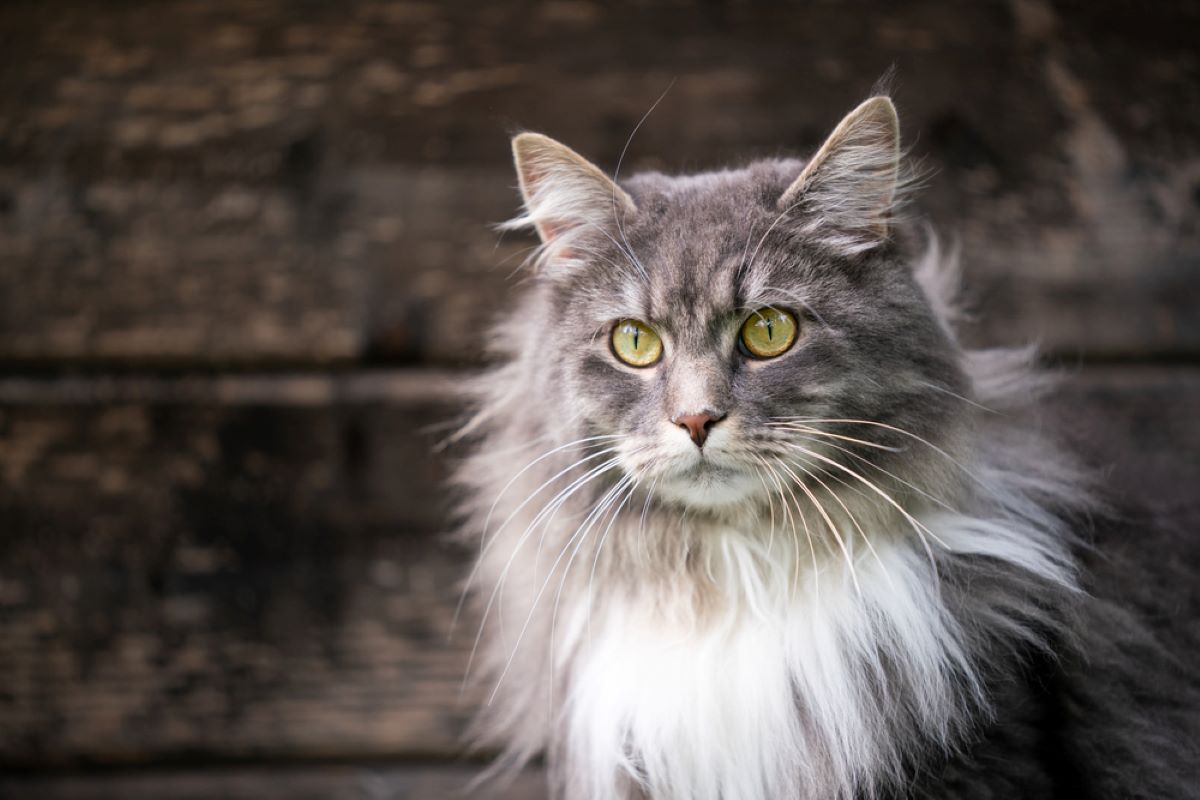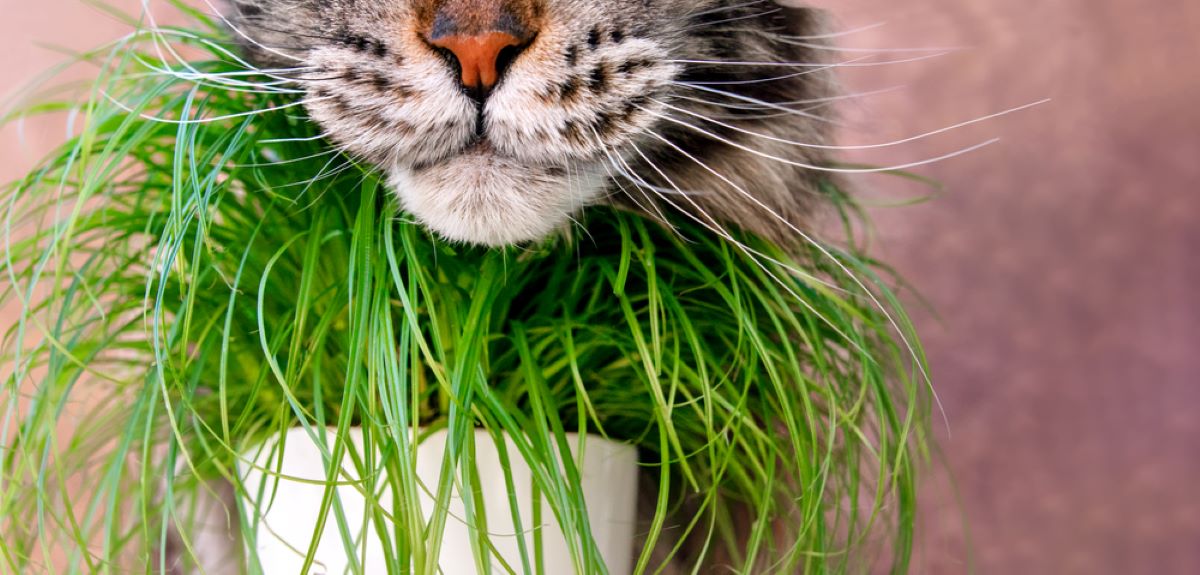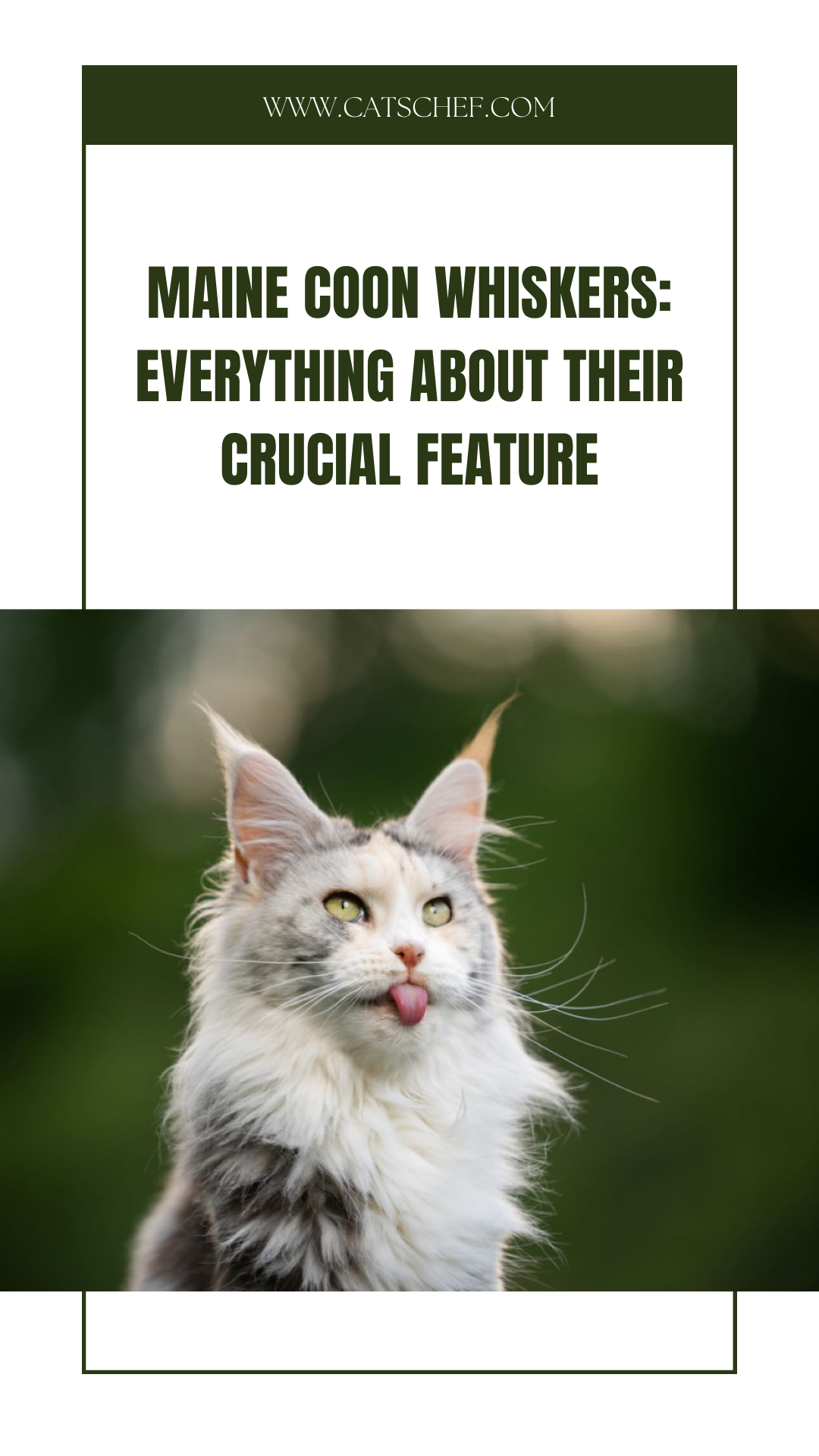📖 Table of Content:
I’m sure we are all familiar with Maine Coons. These gentle giants are both beautiful and intelligent, playful and affectionate. They are famous for their loving personality and their long and fluffy fur is a snuggle dream of every cat aficionado. But, what about Maine Coon whiskers?
If someone was to tell you to draw a picture of a cat, no matter your drawing skills, I’m sure you would most definitely remember to draw whiskers. Am I right? You would draw two ears, one cute nose, pretty almond-shaped eyes, and definitely whiskers.
When I was a kid, every cat I drew had to have precisely three whiskers on each side of her pink little nose. Not sure why three, but that was my general rule.
My imagination might have been far from reality, but one thing is for sure: cat whiskers are, if not the first, then among the first things we remember cats by.
But, what’s so special about Maine Coon whiskers? Well, if we consider how every feature of this breed is impressive and breathtaking, we have to assume that there is something unique about their whiskers, too.
So, prepare yourself to be whisked off on a whirlwind adventure of finding out everything there is to know about Maine Coon’s whiskers.
What are whiskers, really?
Before talking about Maine Coon’s whiskers, let’s see what cat whiskers actually are.
Today, maybe I don’t draw cats as much as I used to, but one thing is certain: I sure write about them. And I’m truly amazed by everything that has to do with them. Whiskers included!
Whiskers play an important role for every breed, not just for Maine Coons. Even though they come from hair follicles like other hairs, whiskers really stand out. They appear rougher and thicker than other hairs and have deeper roots.
Unlike other cat hair, whiskers do not cover the entire body. But, contrary to my 8-year-old self, whiskers do not just appear around the nose area. They are strategically placed above the eyes, near the ears, on their chin, and even on the back of their forelegs.
The pattern and location of whiskers vary from breed to breed, of course. But most cats have 12 whiskers that are placed in four rows on each check. So, apparently not three! (Little me is shocked.)
What purpose do they serve?
Cat whiskers are not just a pretty facial feature. They consist of blood vessels and nerves and are more sensitive than other hairs. Whiskers for cats are like antennae for insects: they provide sensory input and help cats navigate through the environment.
Whiskers work on the principle of air vibrations. Cats are able to feel when someone is about to approach them or when the weather is about to change because their whiskers feel the vibration of the air. That, in turn, stimulates the nerves in them.
Whiskers allow the cat to detect small and sometimes insignificant changes in the vibration of the air. That helps them determine the size, shape, and speed of any near occurrence.
So, it is safe to say that whiskers are highly important for cats. They use them for better evaluation of their environment and to decide whether they can fit through certain spaces or not. With whiskers, cats have a sense of orientation, are able to hunt and walk at night, and also communicate with other cats.
How you may ask? Well, it is pretty simple. Cats have small muscles around the muzzle area, and they are responsible for controlling whiskers depending on cats’ feelings. If they’re stressed, whiskers will be pointed toward the potential threat, and if they are content, whiskers will be relaxed.
Pretty amazing, right?!
Maine Coon whiskers: what’s there to know?
Maine Coons are said to have the biggest whiskers of all cat breeds. This should come as no surprise, really. A big cat like a Maine Coon simply cannot have small whiskers. Her grandeur has to be accompanied by grand features.
As with any other cat, Maine Coon’s whiskers are something they can’t live without. Every time their whiskers touch pretty much anything, they send a message to the brain with all the necessary details. That is truly impressive if you ask me.
Imagine laying on your bed, having the third nap of the day, and being able to sense someone approaching you and knowing everything about that person solely because of the magical powers of your whiskers. If only we humans could be so advanced!
But, what makes them so specific? What sets Maine Coon’s whiskers apart from the rest?
Below are some of the most common questions cat lovers ask about the Maine Coon whiskers. I formed the answers based on what cat experts have told me and on the personal experiences of Maine Coon owners. So, let’s take a look!
1. How many whiskers does a Maine Coon have?
An average cat has about 8 to 12 whiskers on each side of her muzzle. These “facial” whiskers are also known as mystacial whiskers (or mystacial vibrissae).
But, since Main Coons have to be better in every aspect and exceed every other breed, they usually have 16 whiskers on each side. And many of them have four rows of four whiskers on both sides. Wow, so organized, I love it!
However, as previously mentioned, these mini lions have other whiskers across their bodies. They also have shorter whiskers on their chin, over their eyes, and on the backs of their forelegs. Completely unexpected, right?
2. Why are Maine Coon whiskers so long?
These regal-looking felines have whiskers as wide as their bodies.
An average grown-up Maine Coon weighs between 9 and 18 pounds, but some, especially males, can even reach 25 pounds. The size of a typical Maine Coon comes in at 10 to 16 inches tall, and 40 inches in length.
So, an average Main Coon can have from 4 to 6 inches wide whiskers. Of course, these measurements are not the general rule. They depend on the overall size of the specific Main Coon. But all in all, they are pretty wide when compared to some other species.
3. What do Maine Coon whiskers look like?
Like any other cat, Maine Coon cats usually have white whiskers, despite their fur coming in a variety of colors. But, the color of their whiskers can change as they grow older. Just as our hair turns gray, it is purrfectly normal for Maine Coon’s white whiskers to turn black over time.
The position of their whiskers can tell you a lot about their mood. As previously mentioned, cats use whiskers as a communication means, and Maine Coons are no different.
If their whiskers are facing forward, it means they are alerted or excited. If they are flattened against checks, they are angry or scared. And if they stick out straight, they are calm and content.
You see! You do not even have to be fluid in Cat to understand them. Their body language tells you pretty much everything!
Main Coon cats are not one of the breeds whose whiskers tend to curl. If they do have curly whiskers, that means that their food and water bowl are narrow and not wide enough. The same goes for bent whiskers.
Some owners usually forget about whiskers when they are getting food and water bowls for their Maine Coons. They might be prioritizing decor and neglecting the actual purpose and their cats’ needs.
Curled or bent whiskers are nothing to worry about. They will eventually regrow back into straight ones. Although they can cause serious medical conditions. More on that later.
How to take care of Maine Coon whiskers?
First things first, put the scissors down!
It’s not advisable to cut any cat’s whiskers, because, as we said, they are more than just a nice addition to the face. Cats need their whiskers and there’s no need for us to trim them.
Maine Coon’s whiskers are also highly sensitive, so we don’t recommend even touching them. No need to attempt any french mustache trend on these fluffy beasts.
Cutting or curling whiskers can cause several problems, like severe pain, confusion, disorientation, and loss of vital navigation abilities. And I’m guessing nobody wants that. So it’s best then to leave their whiskers alone.
Maine Coon cats are famous for their shedding which is a feature many cat parents don’t necessarily enjoy. But, apart from shedding their fabulous fur, Maine Coons also shed their whiskers.
An average Maine Coon sheds approximately 2 to 3 whiskers at a time, and the number usually doesn’t increase as they age. And if they are healthy, their whiskers should grow back in several weeks.
Can Maine Coons develop whisker fatigue?
You may now be wondering, “What’s this all about? How on earth can whiskers be tired?!”. But this is not a silly matter at all. This condition can cause many problems for cats, like a lack of appetite, stress, anxiety, and a lot of other behavioral changes.
And since we already know so much about them, you can only imagine how severe Maine Coon whiskers fatigue can be?
Whisker fatigue is a condition in cats that refers to over-stimulation of the whiskers’ sensory system. To put it plainly, if cats’ whiskers are touched too much by basically anything, their brain is sent into overdrive.
By overstimulating their whiskers, there’s a rush of messages sent to the brain which can result in them being stressed or agitated.
This condition is usually caused by the wrong shape of food and water bowls. So, not only does the wrong shape of their food bowl mess up their whiskers aesthetics-wise, but it can also have some seriously dangerous consequences.
The most common symptoms of whisker fatigue cats usually have are:
- using paws to take the food out of the bowl
- refusing to eat from their usual bowls
- distressful meowing like something is wrong
- acting aggressive around the food
Maine Coons are highly susceptible to this condition since their whiskers are the longest of them all. But thankfully, it’s fairly easy to deal with whisker fatigue. All that owners need to do is opt for wider and more shallow food and water bowls.
Final thoughts on Maine Coon whiskers
In the end, one thing is certain: Maine Coon cats never cease to amaze us, and their whiskers are just one of the unique features we simply adore.
Even though they are one of the biggest domestic cats in the world, these gentle giants are fairly easy to maintain. If you are thinking about getting one, and you don’t mind dealing with excessive shedding then you will be good to go. And anyway, math was always fairly simple: a lot of fluff equals a lot of love.
Their whiskers will definitely be the thing you love most. They give such a refined touch to this already sophisticated-looking breed. You would always have the impression that someone very wise is watching you.
